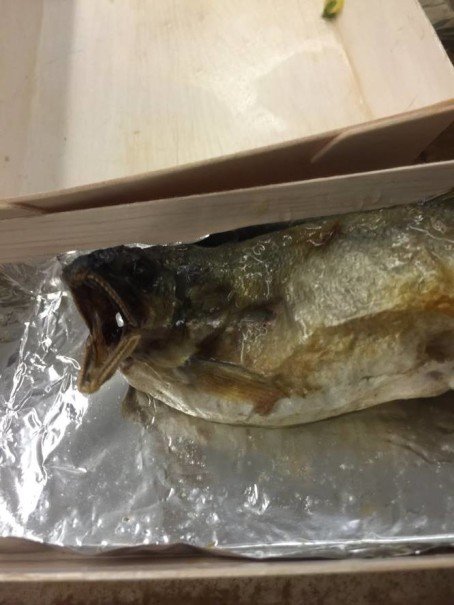
The Pride of Eating a Really Bony Fish Successfully

The Pride of Eating a Really Bony Fish Successfully
Bento in Taiwan
Jet-lagged and drowsy, my mother called out from her room that my aunt dropped off a bento from San Jing (三井) that I could eat for breakfast. This was exciting. San Jing is the place for Japanese food in Taiwan. I don’t mean that in a popular way, but in a fancy way. The same way that many New Yorkers rarely make the trek to the Empire State Building or visit “New York must-eats” from tourist guides, people in Taipei rarely go to San Jing unless they’re there to entertain special guests or to celebrate a big occasion. I looked at the hostile fish which snagged my gaze, and it felt like having birthday cake on a regular, birthday-less Thursday.
I’ve heard that ayu, or sweetfish, are native to Taiwan’s Xindian River, but other sources tell me that the species was actually introduced from Japan. Japanese occupation led to a great amount of Japanese influence on Taiwanese culture. I heard remnants of this in the musical combination of enka and C-pop my mom was blaring from her room, the architecture within the capital city, and the many Japanese restaurants we’d always visit for sashimi, tonkatsu, and ramen.
Visiting Taiwan as an ex-pat every year, I’m always met with a copious amount of Taiwanese food, much of it fish. My mother always told me eating fish would make me smarter, a better thinker, and generally healthier. With her and my other relatives picturing barrages of horribly greasy and cheese-smothered meals in America, they were determined to restore my contaminated ABC (American Born Chinese) body to one full of Taiwanese sweetfish, noodles, and soymilk—lots and lots of soymilk. Truthfully, after being suddenly confronted with the task of managing my own diet at college, this was a welcome break.
I snap a photo of it and send it to a friend. “This fish is mad at me.”
“What did you do?” he replied.
I responded with a silly Facebook sticker. Digging messily into the grilled fish, I saw that it was extra special because the insides were full of eggs. After breaking into the crisp skin and soft meat with a pair of chopsticks I choked on a few small bones: the ayu’s final revenge.
Its twisted body—a result of the chef’s skewer—makes it look like the fish is still swimming, something I never understood. Why would you want your food to still look vaguely alive? I’m reminded of this ongoing joke Taiwanese people have about foreigners: the westerner goes into an Asian restaurant and orders a fish. They yell out in fear when the meal arrives. Why? Because they’re so used to eating fillets that they don’t know fish have heads and tails which we, the non-wasteful group, gladly devour. It’s a meticulous and frustrating process to eat the ayu clean, but when you do, it really feels like you’ve worked for the meal. That sense of accomplishment itself is worth a few bones.